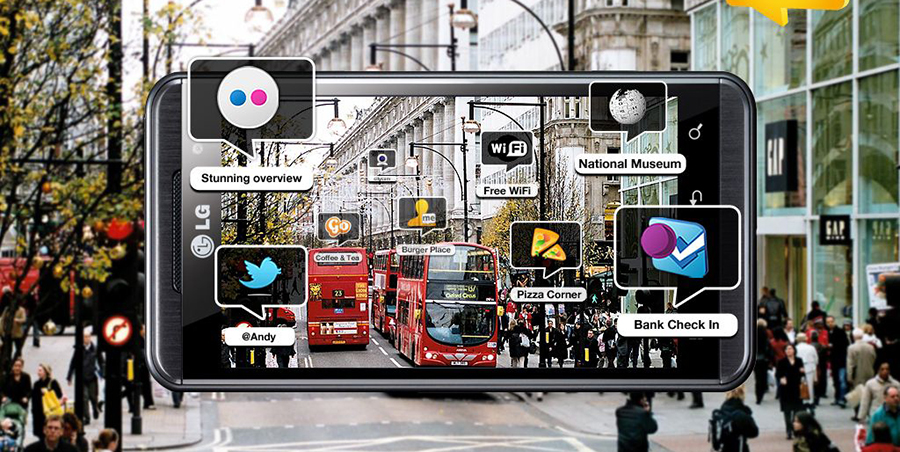
A regular OAAA Outlook feature article will highlight insights collected from members of the OAAA Innovations Committee. The committee members will answer questions related to OOH data, technology, and innovation. If you have a future question for the committee, send your submission to [email protected].
How do you see augmented reality and virtual reality impacting OOH in the next five years?
Kevin Bartanian, EVP Sales & Business Development, StandardVision
Augmented Reality (AR) is our view of reality as modified by a computer through sound, graphic, video, or otherwise. The end goal is simple – enhance one’s current perception of reality. With this definition in mind, it is easy to appreciate AR’s influence on OOH. AR extends viewer experiences beyond the confines of a display by allowing the viewer to use their personal smart devices to interact directly with ads. Brands can provide an incentive for viewers to participate (e.g., a game, a discount, a secret message). In this context, we must also consider the role of Virtual Reality (VR). While VR creates new platforms that closely resemble in-game advertising, VR is still a long way from impacting OOH. It’s not really a passive technology and requires expensive and invasive gear.

As the device in our hand continues to evolve and become more and more a part of our everyday life with tap-to-pay and scan-to-redeem, AR will be a part of the evolution. The technology of the phone directly impacts the OOH space in a positive light. OOH will continue to be that strong branding aspect of the campaign but also the driver of interaction within a campaign. I believe that more and more brands that are able to see an impact of the OOH space will couple the technology to drive experiences at the consumers’ fingertips. Today the use of AR/VR are very rare or only used in larger one-offs in the OOH space. The future of the ability to see how that bread was made or tour a home all through the use of OOH and your mobile device will be commonplace, not only for national brands, but local as well.

VR – not at all. AR – more in the short-term utilizing apps that have side readers native, as well as updated phone operating systems that have readers native like iOs11. Initially the campaigns will be viewable largely in the OOH context; eventually, they might be only viewable as AR experiences.
Michael Galkin, Director of Marketing & Research, Branded Cities
Comparing augmented and virtual reality, AR is a great way to merge the old with the new, combining traditional OOH techniques such as hand-painting and vinyl posting with bleeding edge tech. AR, and its corresponding
apps, is freely available, scalable, and can extend the OOH experience into a consumer’s hand, delivering a custom experience, while still emphasizing great OOH placements.

I have long imagined a world of augmented reality ubiquity in which people never need to remove their eyewear and instead can interact with the world seamlessly. Held back at the moment by small field of view and other technical limitations, a near future exists in which users drive by billboards that are not physically there but digitally mapped to the geolocation, appearing in the field of view as if a real billboard. This will massively reduce capex on new billboards, eliminate landlords and all the real-estate obstacles, and allow for complete programmatic serving. Microsoft Hololens has experimented with this already.

I believe augmented reality should grow in use but will remain a specialty or stunt type execution in OOH even into the next five years, unless technology for enabling both execution and the user experience becomes more universally accepted and implemented.
Virtual Reality is even more restricted today by the need for specialty viewing equipment. As such, it is unlikely there would be a scaled solution that will materially impact OOH.
All that said, we should see better screen technology being deployed, including networks that will incorporate 3D screens that don’t require special glasses. This should enable more augmented and virtual Reality capabilities, but the price of developing the experience will likely be a barrier to mass adoption.

Augmented reality enables an interactive experience that blends the physical world with digital content, while virtual reality offers a completely immersive experience into the digital realm.
AR is easily accessed by audiences and will likely be adopted more quickly than VR as a component of OOH campaigns, be it via Snapchat filters or the infamous Pepsi Max bus shelter. VR, at this time, typically requires a headset and is thus more restricted to specific contexts. That said, when it does kick off at large, media buyers will have new OOH inventory (within the VR experience) to include in their campaigns.

I believe AR and VR will move “up the screen path” to OOH in the next five years, primarily from lifestyle retailers. We all have seen some brands embrace this usage for furniture and clothing at the desktop/tablet/mobile level, and this trend will increase as brands make the necessary plays for differentiation in an “Amazonified” world that has purchasers looking for deals in the relative absence of value propositions. To get and keep potential customers zeroed in on a given brand/product, brands will need to create that differentiation at the “top of the funnel,” via broader channels (including traditional and digital OOH) and then double down on that differentiation by showing consumers exactly how their offering provides a unique benefit and/or is best equipped to alleviate a specific pain point. For example, a screen in either a retail environment or even concert venue could answer the questions, “What will those shoes look like with this outfit, and how will this help me look cooler?” Once that is answered, communication could be sent to the consumer’s mobile device on where to get those shoes, and, oh by the way, if you buy today, you get 10 percent off and free two-day shipping (take that, Amazon!).

AR and VR are in great health. Fueled by consumer appetite, backed by the gaming industry, and driven by tech companies looking to crack the wearables market, the global outlook is projected to reach almost $90 billion by 2022, according to Horizon (2016).
In OOH, the creative potential of AR and VR experiences are endless. High impact, standalone executions that create a real buzz amongst users are a great way to create long-lasting memories that help drive brand affinity.
Over the years we have seen time and time again how the social videos of these genuinely immersive experiences can also be used as a springboard to drive content and discussions online. To make the most of augmented reality in OOH over the next five years, the industry will need to deliver more scalable solutions that more people can experience first-hand. This is an exciting space to work in and we are looking forward to seeing how digital OOH creativity evolves over the next five years and beyond.

The future of AR’s relation to OOH will be all about the gamification of real-world locations and turning them into brand experiences. Mobile AR games will direct people to specific locations where brands will give away free samples or provide unique photo opportunities that players can share on social channels. This kind of advertising doesn’t feel like advertising to the player, which is exactly why we’ll start seeing so much more of it.
The exciting thing about VR of the future is the potential for OOH to be brought into the home. There’s no question that ads will be a huge part of VR. There is also no question that the best people to design OOH campaigns inside a virtual world are the people who are designing them in the real world right now. Imagine the reach and impact billboards will have once they’re inside every living room.
Download the PDFPublished: November 6, 2017

